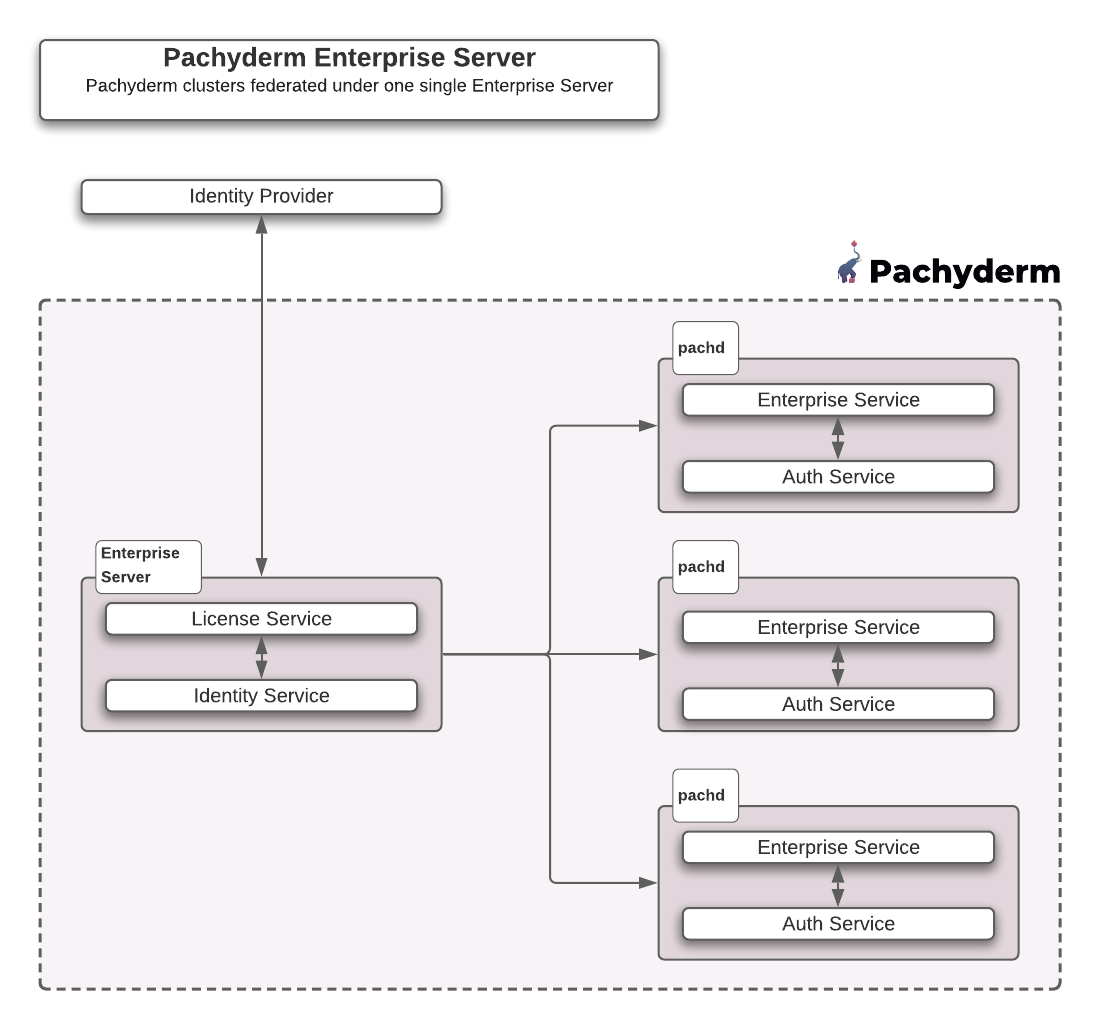This guide deploys Enterprise Server as a standalone cluster within a multi-cluster deployment.
Before You Start #
There are a few minor differences to note when deploying an Enterprise Server when compared to a standard Pachyderm cluster:
- No deployment target is necessary in your Helm chart since there is no object store
- The Enterprise Server cluster contains the
dexdatabase - Each registered cluster requires its own PostgresSQL
pachydermdatabase
How to Activate Enterprise for Multi-Cluster #
- Create a separate Kubernetes namespace dedicated to your enterprise server:
kubectl create namespace enterprise-server
kubectl config set-context --current --namespace=enterprise-server- Create a Helm chart
enterprise-server-values.ymlfile for your enterprise server (see Helm Chart Reference Guide). - Deploy the Enterprise Server cluster:
helm install enterprise-server pachyderm/pachyderm --f enterprise-server-values.yml- Verify deployment:
kubectl get all --namespace enterprise-serverReference Diagram #
The following diagram gives you a quick overview of an organization with multiple Pachyderm clusters behind a single Enterprise Server.


